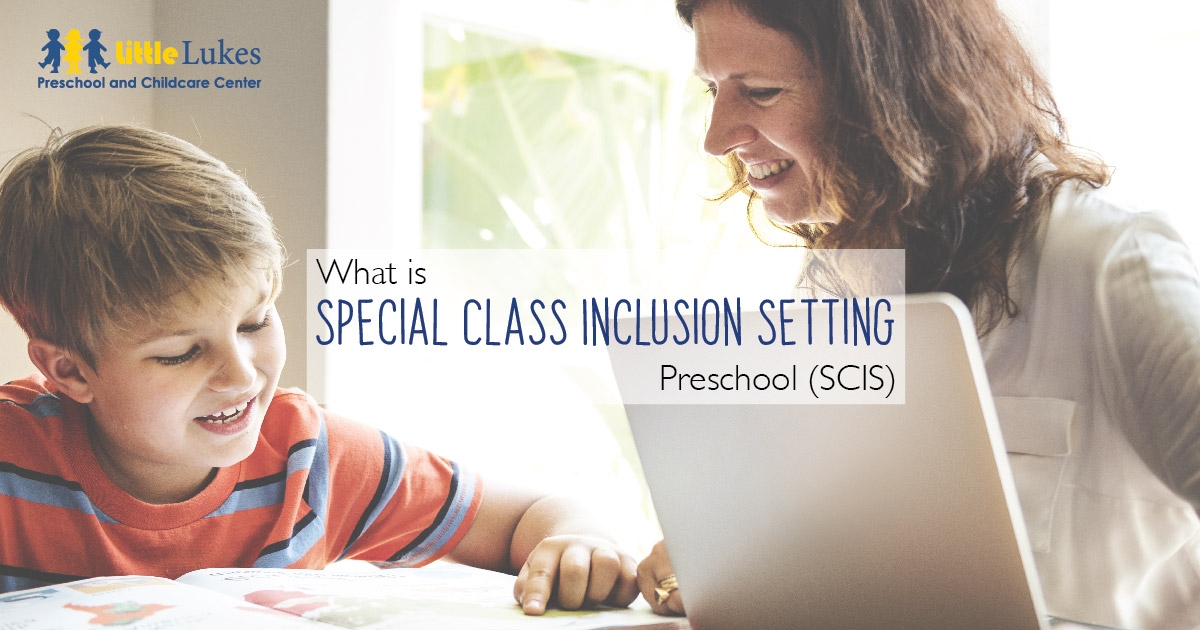What is Special Class Inclusion Setting Preschool (SCIS)

Linda Stummer has a goal.
She wants to establish a better understanding surrounding Special Class Inclusion Setting Preschool
(SCIS).
As the Director of Classroom Excellence at Syracuse Daycare Little Lukes, Linda
has more than two decades of instructor knowledge. With a Bachelor of Science
Degree in Speech and Hearing Science at SUNY Geneseo and a Master of Science
Degree in Special Education at Penn State University, Linda speaks with a
confidence that only comes from firsthand experience.
“I have been teaching in inclusive settings since 1989,” said Linda. “While it
really dates me, the benefit of that is I have watched children progress
through inclusive classrooms through high school and graduation. I have watched
children with disabilities graduate with regents diplomas and go to college.
Those opportunities wouldn’t have been available if they were educated in
self-contained settings where the bar was lower. I have also watched students
without disabilities choose career paths because of their first account
experiences of being part of inclusive settings. I have been able to watch
young adults come back and reflect on their experiences and how that has molded
their thinking as adults.”
Linda sheds light upon SCIS and its many benefits for preschool students with
developmental delays as well as those without.
Q: What is the mission of inclusion preschool?
LS: Inclusion is
really a philosophy that all children have equal access to programming and that
lessons are accessible to a range of learners so that everybody has the ability
to participate. All students or all children have real equal status. Everyone’s
strengths and weaknesses are celebrated and appreciated.
LS: It all begins
with planning with two teachers who have strengths in different areas, the lead
teacher having strengths with general education and the special education
teacher having strengths with a variety of disabilities in terms on knowledge
background. “What are all the different ways we can present information?” so that a variety of learners can comprehend
the lesson in a variety of ways. What are all the ways children can show us
what they know? Let’s get away from the
one-way approach. We need different ways children can express and demonstrate
their knowledge. Let’s take a look at the number of different types of
environments children take information in.
Some children do the best working individually, some working together
with a partner, some by watching a whole group. It’s really planning on the
different ways we can present information, the different ways children can
express and demonstrate their knowledge and then setting up the environment to
best meet all learners.
LS: Because these
early years are the critical years for learning. The brains of our little ones
are most ready to take information in and change, learn and grow. We can’t get
these early years back. We have to capitalize on them while we have them. The
learning outcomes are absolutely higher and more cost-effective.
LS: All children
deserve to be looked at through a strength-based model verse a deficit model.
We look at disabilities as differences, not deficits. If we as educators are
celebrating the differences that all children have, whether they are students
with or without disabilities, then we do not have to set up or do a lot of
extra in pairing kids together with and without disabilities. We appreciate
differences that each child brings.
LS: There is a
wide range, and parents need to collaborate and interface with the pediatrician
but especially monitor speech and language in terms of how children are
following directions and expressing wants and needs.
LS:
Benefits are huge. It leads to a greater generalization of skills. Related
service providers are able to, on the spot, model and consult with educators so
that new skills can be practiced across a variety of settings rather than in
isolation.
LS: The long-term
benefit is developing the philosophies in our little ones at a very early age
in terms of how we perceive each other. We’re teaching children at an early age
to celebrate differences rather than identify deficits. If children identify
that at the preschool level, they are entering school age programs with a whole
different lens.